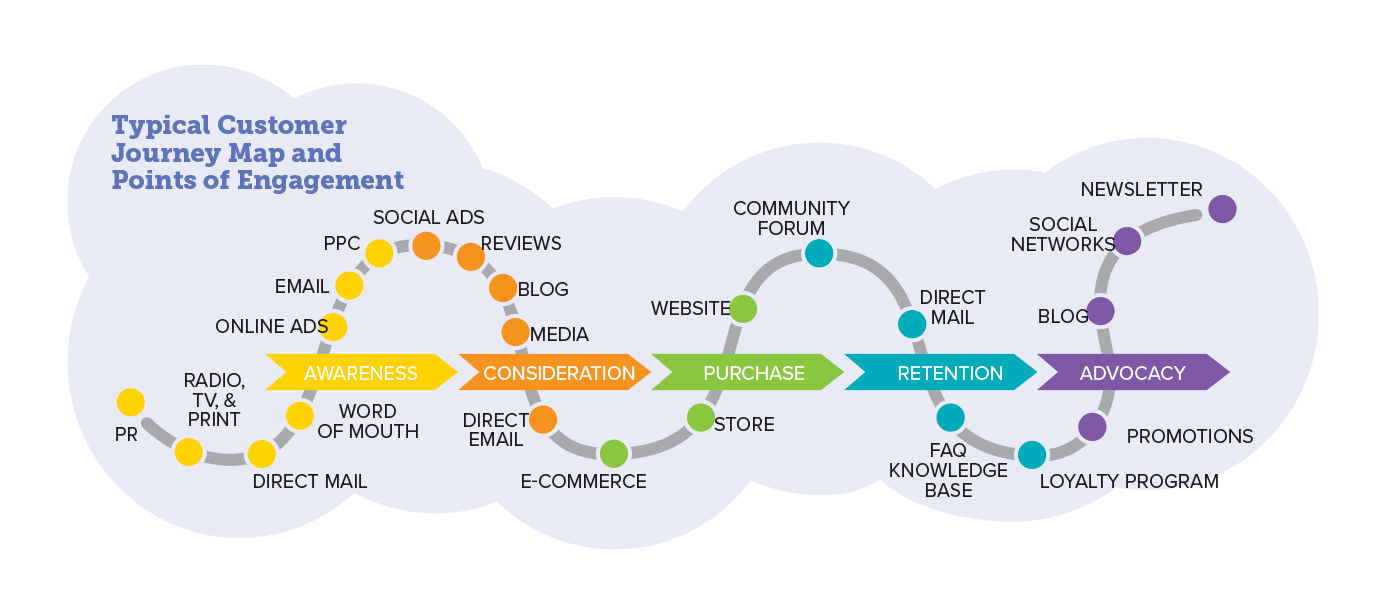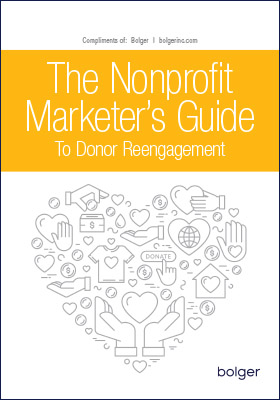What does it take to convert?
You may have heard of the marketing rule of seven, the long-held idea that it takes an average of seven interactions or exposures to a brand to convert a potential customer.
However, we all experience an information overload these days—from radio, television, print, digital publications, social media, etc.—which means that the average consumer now encounters thousands of brand messages each day. Breaking through the noise is more difficult than ever, and many marketing experts now agree that it takes as many as 13 touchpoints to convert a lead.
So how many touchpoints does it really take for you? What are the most important touchpoints for you to focus on? How do you determine what messaging makes the most sense for each touchpoint? You’ll find no shortage of advice if you turn to the internet or your marketing colleagues, but before you make any decisions about what will work best for your brand or business, we suggest you take a step back and inventory your marketing assets and how you use them as touchpoints.

Your Customer’s Journey
A study by Aberdeen Group revealed the importance of placing customer touchpoints into a customer journey map. The study found that companies that have a formal customer journey management program have a 54 percent greater return on marketing investment. When developing your marketing assets to be used as part of the customer journey, remember that each one should be strong enough to deliver your brand’s message on its own.
Understanding where on the journey map the customer has touched your brand will help you plan the next step toward conversion. Did they download something from your blog or website? Ideally, you could collect their email address and send them an offer for a related asset (promoting another touchpoint). Did they follow your brand on social media? The next step might be a targeted post that would lead them to your website.
Voluntary vs. Delivered Touchpoints
Generally, there are two distinct types of touchpoints: voluntary touchpoints, which are those that your customer comes across and engages with, and delivered touchpoints, which are those that you plan, deliver, and track. A voluntary touchpoint could be a customer seeing your logo on signage as a sponsor for an event or seeing a post you’ve boosted on social media; a delivered touchpoint could be a direct mail catalog or an email blast.
During the ideal customer journey, there is movement from voluntary to delivered touchpoints. It’s that journey that turns an individual into a lead and a prospect into a customer. To help consumers on that journey, you need to develop points of engagement at every stage. It’s imperative to remember that if your content doesn’t engage the consumer, what you call a touchpoint, they might call an annoyance.
Rack & Analyze
Having the right content to deliver as touchpoints is imperative, and data can reveal what’s working best. You’ll want to know what content was consumed when, where, and whom, as well as which pieces of content are most popular, what your audience is looking for, whether they consumed the content on a laptop or mobile device, and what came before and after their path to engaging with the content. All this information should be considered as you develop additional touchpoints for a customer journey and predetermine which assets will be deployed and when. Google Analytics is free and easy to add to your website, and even the free versions of email software such as Mailchimp and Constant Contact offer analytics. Other software options can help you plan, visualize, and manage the customer journey; HubSpot and Marketo are two of the more well-known offerings.

Whatever touchpoints you decide will work best for your brand or business, remember that it’s no longer your products or services that will move the consumer through the journey but instead the experiences and opportunities you provide them to interact with your brand. That said, more is still more, so even when budgets are tight, spending money on developing the right touchpoints that work for your audience should be a top priority.
Want a helpful marketing guide?
Our helpful marketing guide will be mailed to you for FREE.
Get a Free Marketing Guide








